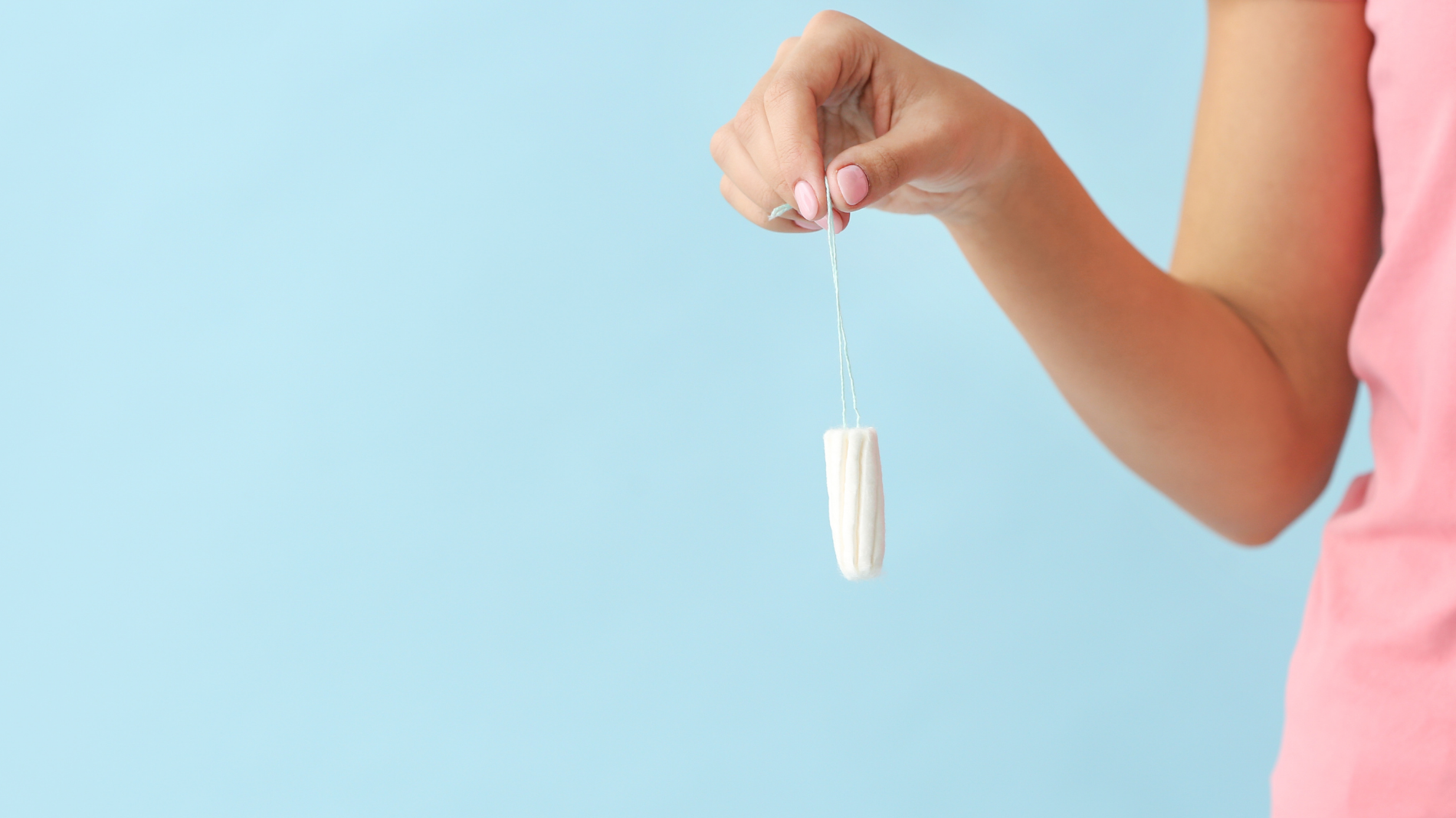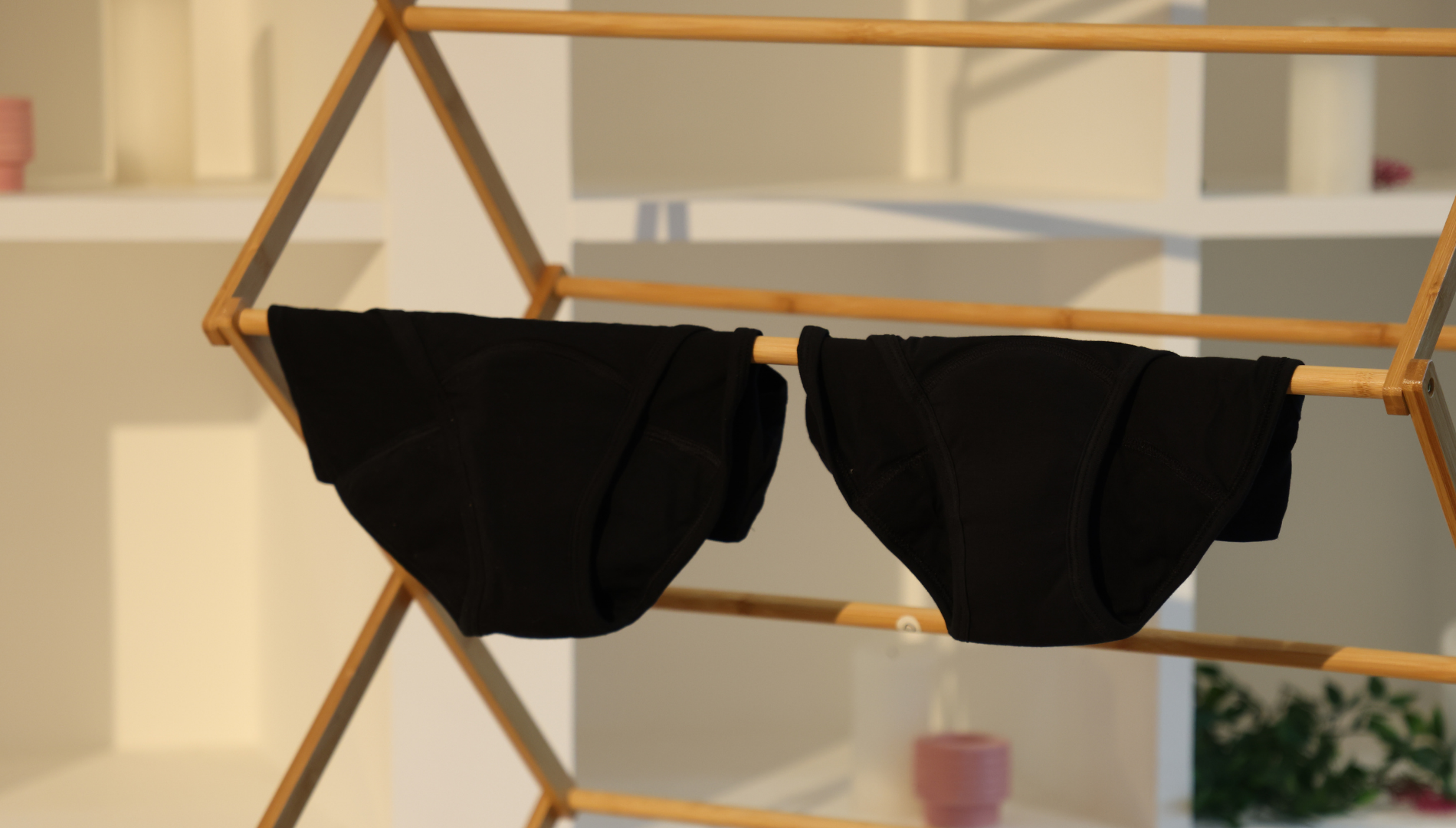Not sure how to insert a tampon? Second guessing what a tampon is? Well, you're in the right place. In this blog, we'll answer all those questions about tampons you might have (and the ones you probably don't want to google)...
What is a tampon?
A tampon is a form of period care designed to absorb menstrual flow. Cylindrical in shape, a tampon is made from absorbent materials such as organic cotton (although a lot of mainstream brands use nasty synthetic materials such as rayon) and is inserted into the vagina during your period.
Tampons arrive in various sizes and absorbency levels to suit every flow. Here at Mooncup, we offer Light, Medium & Heavy absorbency levels. We also offer applicator and non-applicator tampons, so you can choose your preferred style.
How do tampons work?
Tampons are designed to absorb menstrual blood and prevent it from leaking out of the body. Our tampons are made from 100% organic cotton, so they're super absorbent and soft and also include a protective tampon veil.
Will the tampon fit?
Remember, your vagina can also birth a baby, so a tampon shouldn't be a problem. Tampon sizes are based on the amount of menstrual fluid they absorb - ours arrive in Light, Medium & Heavy - most people start with a Medium (sometimes called "regular" by the mainstream brands) but if you want to start with regular absorbency tampons and change a little more often then that's okay too.
Will inserting a tampon hurt?
Using and inserting a tampon should not hurt. When it comes to using tampons, you're in complete control, so if something doesn't feel right you can stop and change what you're doing.
Some people may feel mild discomfort when they first begin using them and they're still getting used to them. In fact, when tampons are used correctly, you shouldn't feel it at all once it's in. People who suffer from vaginismus (a condition where the vagina tightens up when you try to insert something) find inserting tampons painful.
What hole does a tampon go in? Understanding the vaginal opening
Let's talk about anatomy. A tampon goes in the vaginal opening, located between the urethra (where you pee from) and the anus (where you poop from). For those with terrible geographical skills, the urethra is actually too small for a tampon to be inserted into and the vagina is a single canal - so it's not possible to insert it into the wrong hole. It is important to insert the tampon correctly to ensure comfort and effectiveness.
Preparing for Insertion
Before you insert a tampon, it's essential to prepare yourself to ensure a smooth and comfortable experience. Here are some steps to follow:
-
Wash your hands thoroughly: Use soap and water to clean your hands, preventing any bacteria from being introduced into your vagina.
-
Find a quiet and private place: Choose a bathroom or a private room where you can relax without interruptions.
-
Relax and calm your muscles: Take a few deep breaths to help your body relax. This will make the insertion process easier.
-
Remove the tampon from its wrapper: Hold the tampon between your thumb and middle finger, with the string facing downwards.
-
Using an applicator?: If your tampon has an applicator, hold it with your thumb and middle finger. Use your index finger to guide the tampon into your vagina.
By following these steps, you'll be well-prepared for a smooth tampon insertion experience.
How to insert a tampon
Step 1 - Choose the right tampon for your flow
It's important to use the right tampon absorbency for your flow. If you're unsure, read our blog all about getting to know your flow.
Step 2 - Wash your hands
Whilst your vagina isn't dirty, your hands might be! Take a moment to ensure you're not exposing your vagina to any bacteria you may have picked up throughout the day.
Step 3 - Get into a comfortable position
This might mean putting one foot on the bathtub, standing and spreading your legs or sitting on the toilet - whatever works for you! Remember, it's important to feel relaxed, if you're feeling tense then chances are your muscles are too. So, take a moment to calm down and take a few deep breaths.
Step 4 - Insert the tampon
Gently push the skin around your vaginal opening away with your free hand. Hold the tampon with your thumb and middle finger, and use your pointer finger to cover the end of the plunger. Push the tampon inside your vagina aiming it towards your lower back.
Keep gently pushing until you reach the base of your finger. You won't be able to feel the tampon when it's in the right place, so if you can still feel it then push a little further.
Proper tampon inserting is crucial for comfort and effectiveness. Ensure that the string is left hanging outside of your body - you'll use this later when you remove it!
Step 5 - Wash your hands
Pull your pants up, give your hands a good wash and you can go about your day!
How to insert a tampon applicator
Inserting an applicator tampon is exactly the same but as they have a tampon applicator, there's an extra step.
Tampons can come with a plastic or cardboard applicator, making them particularly user-friendly, especially for young girls and teens who may find it easier to use tampons with applicators when they first start menstruating.
Our eco-applicator tampons have a cardboard applicator that requires "unlocking" prior to insertion. All you need to do is hold the outer tube by the grooved rings and give the smaller tube a twist, this will allow you to push the tampon out smoothly.
Without this extra step they'd just collapse before you had a chance to insert! Watch our handy video to see it in action!
What to Expect
When inserting a tampon, you might feel a slight discomfort or pressure, but it should not be painful. Here's what you can expect:
-
Slight resistance or pressure: As you insert the tampon, you may feel a bit of resistance or pressure as it enters your vagina. This is normal.
-
No discomfort once in place: Once the tampon is correctly positioned, you shouldn't feel any discomfort or pain. If you do, it might mean the tampon isn't inserted correctly, or you may need a different size or type.
-
Sensation of movement: You might notice a slight sensation of the tampon moving or shifting as you go about your day. This is completely normal.
-
Pain or discomfort?: If you experience any pain, discomfort, or unusual bleeding, remove the tampon and consult with a healthcare provider.
Understanding what to expect can help you feel more confident and comfortable with tampon insertion.
Removing the Tampon
Removing a tampon is a simple process that requires some care and attention. Here's how to do it:
-
Get into position: Sit on the toilet or stand with your legs apart.
-
Gently pull the string: Slowly and steadily pull on the string that was left hanging after you inserted the tampon. You may feel a slight resistance or pressure as the tampon comes out.
-
Dispose of the tampon: Once removed, wrap the tampon in toilet paper and dispose of it in the trash. Remember, never flush a tampon down the toilet.
-
Wash your hands: After removing the tampon, wash your hands thoroughly with soap and water.
If you experience any difficulty or discomfort while removing the tampon, don’t hesitate to consult with a healthcare provider.
By following these steps, you can ensure a safe and comfortable tampon removal process.
Will the tampon get lost?
No, tampons cannot get permanently lost inside your body. The vaginal canal is a closed muscular passage that leads to the cervix, and it is not possible for a tampon to pass through the cervix and get lost in the abdominal cavity or anywhere else.
However, it's important to note that it is possible for a tampon to become difficult to locate or remove if it's been inserted incorrectly or if the string is not easily accessible. If this happens, the tampon may have moved higher into the vaginal canal, making it tougher to reach and remove. This is rare and many people will never experience this, so it's not anything to be scared of.
What happens if I can't find the tampon? Understanding toxic shock syndrome
If you can't locate or remove a tampon, it's important to not panic. Try to relax and follow these instructions:
-
Wash your hands thoroughly.
-
Find a comfortable position, such as squatting or sitting on a toilet with your knees apart.
-
Insert your fingers into your vagina and try to feel for the tampon. The vaginal canal is about 3-4 inches long and the tampon should be within reach.
-
If you can feel the tampon, grip the string firmly and gently pull out.
-
If you cannot locate or remove the tampon, it’s essential to seek medical assistance. Contact a healthcare professional who can help you safely remove the tampon.
Always remember: it's important to change tampons regularly to avoid potential risks such as toxic shock syndrome (TSS). Always follow instructions on the box regarding the recommended usage duration - we recommend changing your tampon every 4-8 hours (and never wear one for over 8). Regular tampon change is crucial to prevent leakage and ensure safety and comfort.
How to dispose a tampon
Rule number one: never flush a tampon. Even if the brand tells you their product is "flushable". The only things you should be flushing are the 3 P’s (that’s pee, poop & paper!). Our 100% organic cotton tampons can be composted or if that's not doable for you, even if you dispose of them with your household waste or pop them in a sanitary bin, they'll still biodegrade within 18 months. Pretty cool huh? You can also use the tampon wrapper as a small pouch to discreetly dispose of the applicator and used tampon in shared trash cans.
Got another question about inserting tampons? Drop us a message at customercare@wearemooncup.com
Blog disclaimer
Our blog is intended to share information and ideas around periods, health, and sustainability. While we do our best to keep content accurate and up to date, things can change over time. The information here is not intended as medical advice — for any health-related concerns, please consult a qualified healthcare professional. For more information on our claims, please see our Claims Page, and for the most up-to-date product information, please visit our Product Pages.





